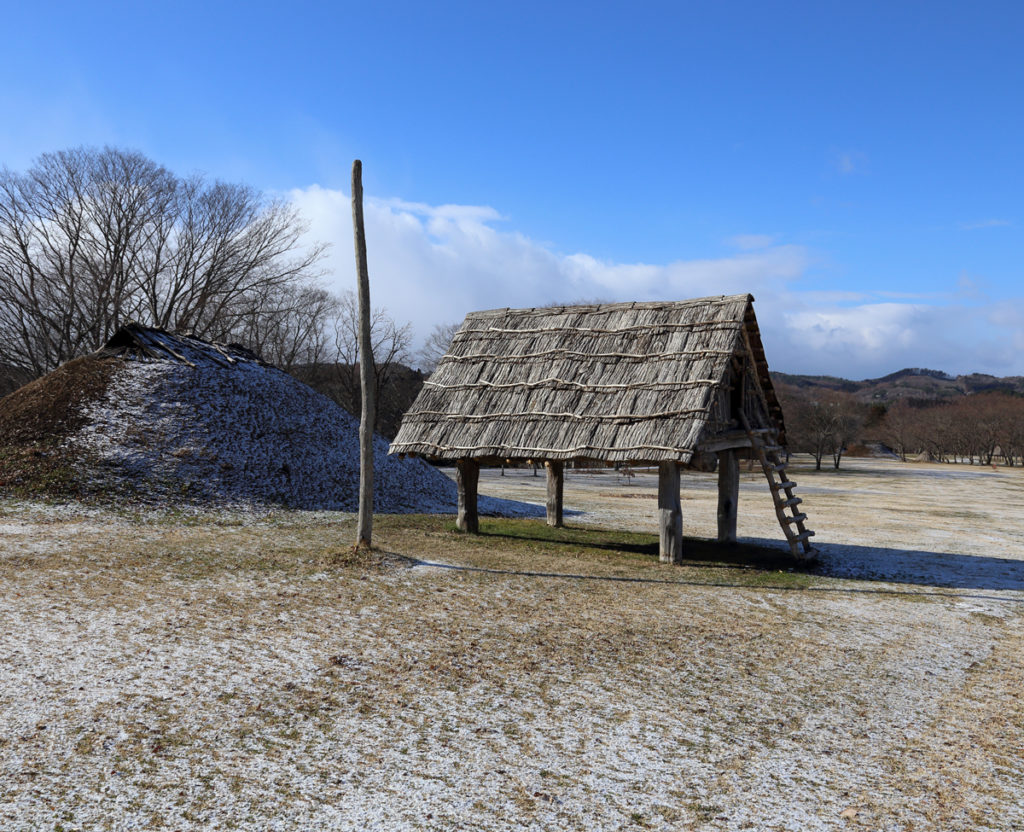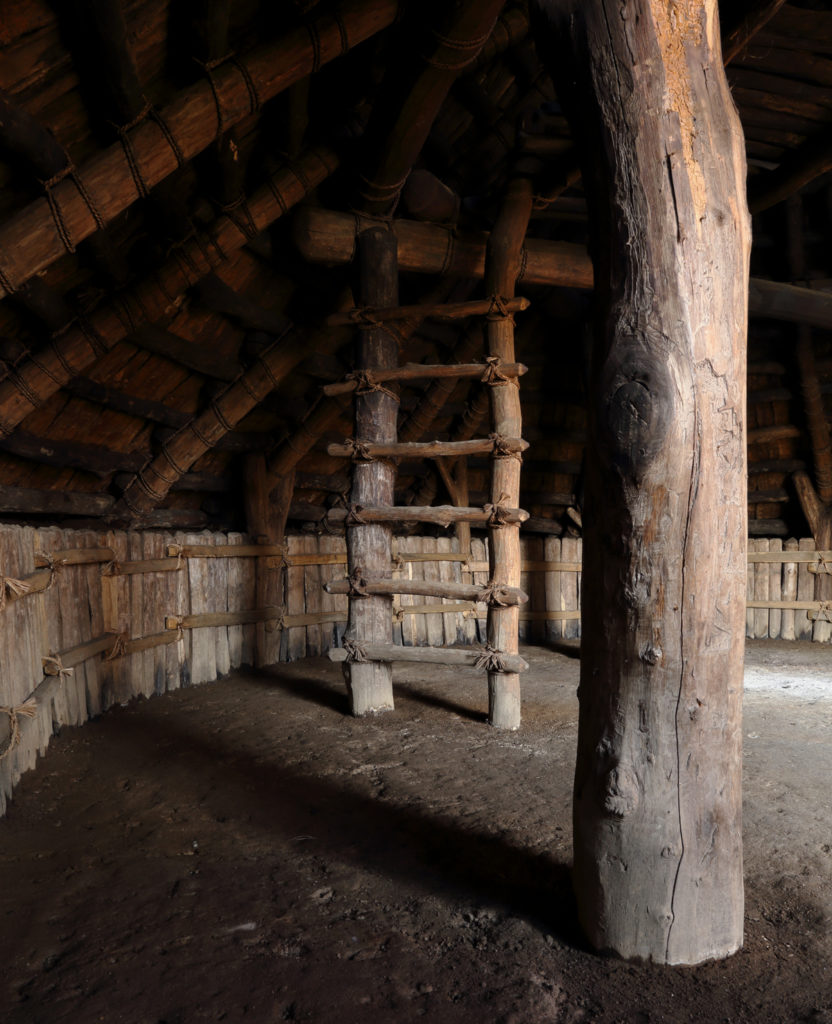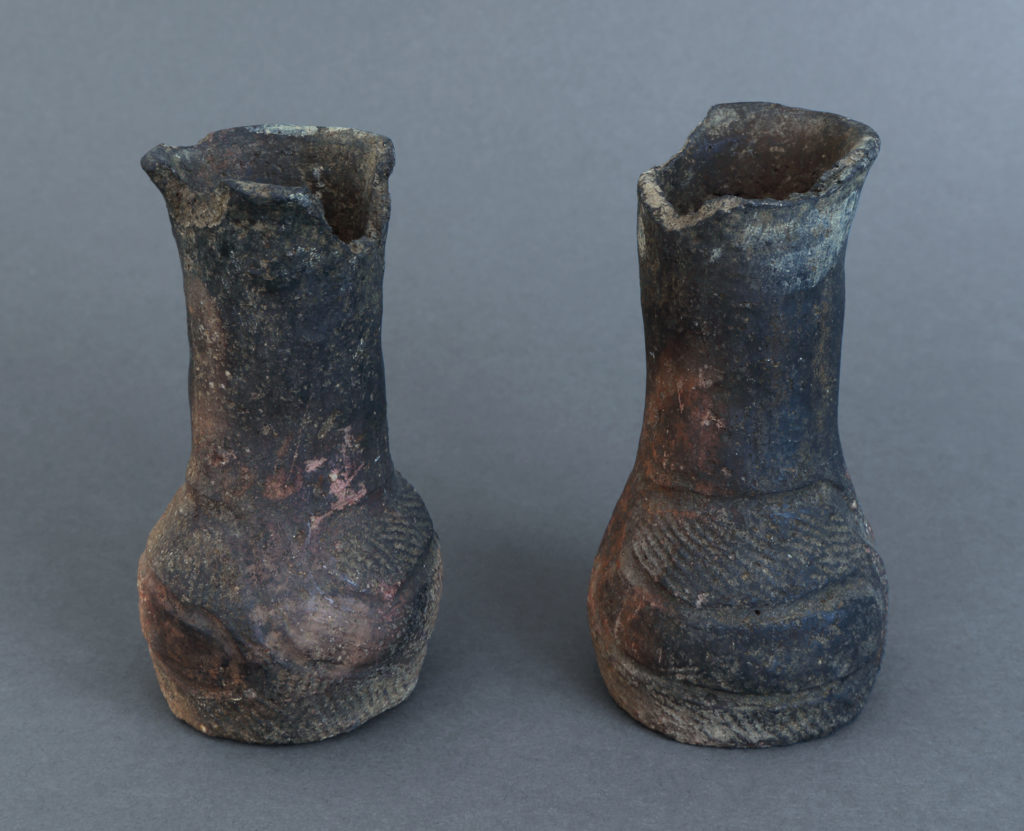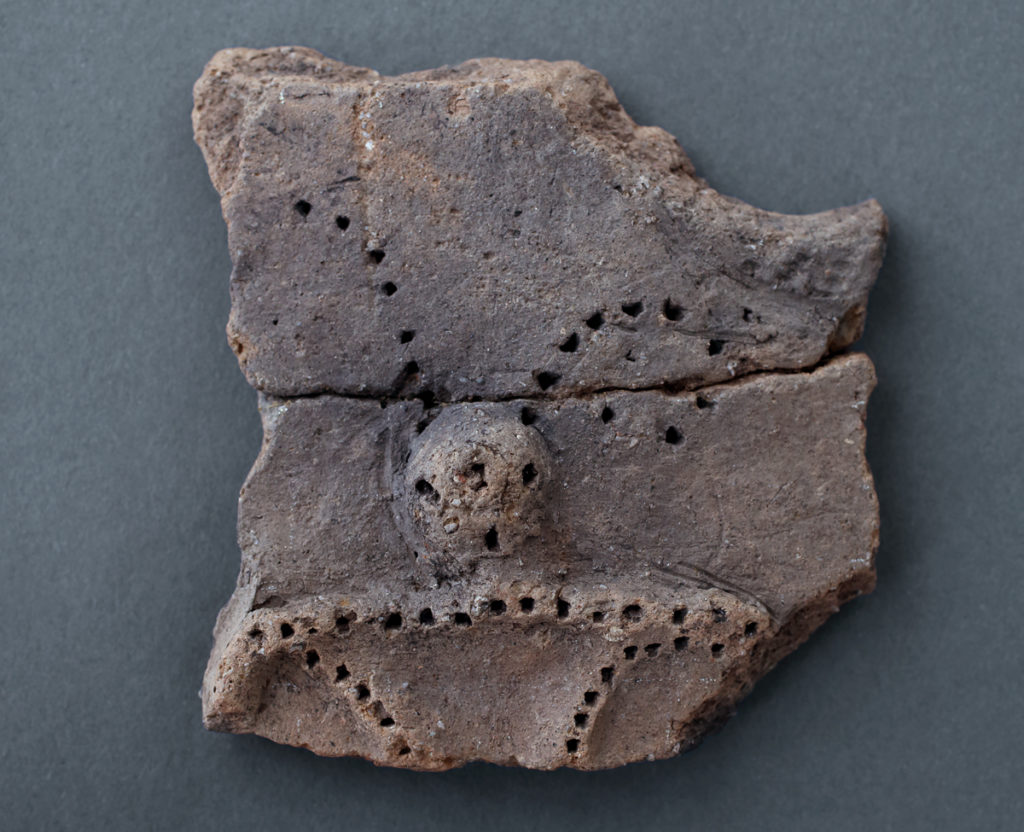Pit Dwellings and Ritual Spaces
What is the significance of having a house and making a home? This trivial question comes to mind and goes away time and time again, in no small part because I spend half of the year traveling. At what point did people begin settling and seeking to belong in a particular place? One question leads to the next, and then my imagination runs wild.
When I let my mind wander back to living spaces in the Jomon period, however, the features are bound to get blurry if I try to shut down my imagination and think of actual examples. That can’t be helped, since we are talking about a period in history thousands of years ago . . . or so I thought until recently. Having heard that actual examples have been found of burned down pit dwellings dating back to the second half of the Middle Jomon (ca. 4,500–4,000 years ago), I visited the Goshono Site, in the town of Ichinohe in Iwate Prefecture.

The discovery, which was made during excavation work in 1996, was significant enough to transform the process of Jomon dwelling restoration. Up to then, Jomon structures were generally assumed to be pit houses with thatched roofs, and this image formed the basis for the restoration of many archaeological sites. The discovery of the Goshono dwelling site, however, had a great impact on the approach to dwelling restoration thereafter.
To learn about the situation at the time of the discovery, I made my way to the museum within the archaeological park. The curator told me that the site’s west settlement was home to a number of burned-down dwellings that were well preserved. The findings included carbonized timbers of the roof and pillars buried intact and not rotting in the soil, and layers of scorched soil. Tests and experiments carried out later revealed that the houses originally had recessed walls lined with boards, and earthen roofs. Some experts suggest that the dwellings had been burned down not by accident but on purpose. While it may be very hard to establish that as a fact, signs were found of a what might have been small altars, and they even contained charred items of pottery, hinting at the possibility that the houses themselves were burned in a ritual bonfire.


Equipped with this knowledge, I took a walk around the site surrounded by the mountains. The settlement was dotted with stone circles and free-standing poles (they reminded me of totem poles) as well as the replicated dwellings. After some time in the sunlight, I returned to the museum and studied the findings from one of the pit dwellings more closely. By the entrance was a furnace, and along the far wall, pieces of sake bottle-shaped, colored, and miniature pottery. The enshrined block of granite was carried from the sacred mountain across the Mabechi River flowing nearby. I couldn’t help imagining the Jomon people offering a prayer at the altar by the light of the furnace 4,000 years ago. In a way, the scene bore a resemblance to my daily routine.
At my house, first thing in the morning, we change the water in the vases holding the sacred branches on our Shinto altar. Next to it is a sacred sake pot and dishes of rice and salt. I wouldn’t claim that my household altar is similar to the altar built by the Jomon people. But I can’t bring myself to think that the space in that pit dwelling was created merely to satisfy some basic need. The people living at that site must have at least traveled in their minds to the blue yonder. The view from the location of the dwellings proved that much. Just as plants live and multiply thanks to the water in the ground, I believe those dwellings were brought to life by continuously burning flames and voices of prayer.
<PAPERSKY no.51(2016)>

Jomon Fieldwork | Nao Tsuda × Lucas B.B. Interview
A conversation between ‘Jomon Fieldwork’ Photographer and writer Nao Tsuda and Papersky’s Editor-in-chief Lucas B.B. The two discuss the ways Jomon culture continues to play an important role in modern day Japan. The video was filmed at Papersky’s office in Shibuya in conjunction with Tsuda’s exhibition “Eyes of the Lake and Mother Mountain Plate” held at the Yatsugatake Museum in Nagano.
Nao Tsuda | Photographer
Through his world travels he has been pointing his lens both into the ancient past and towards the future to translate the story of people and their natural world.
tsudanao.com











